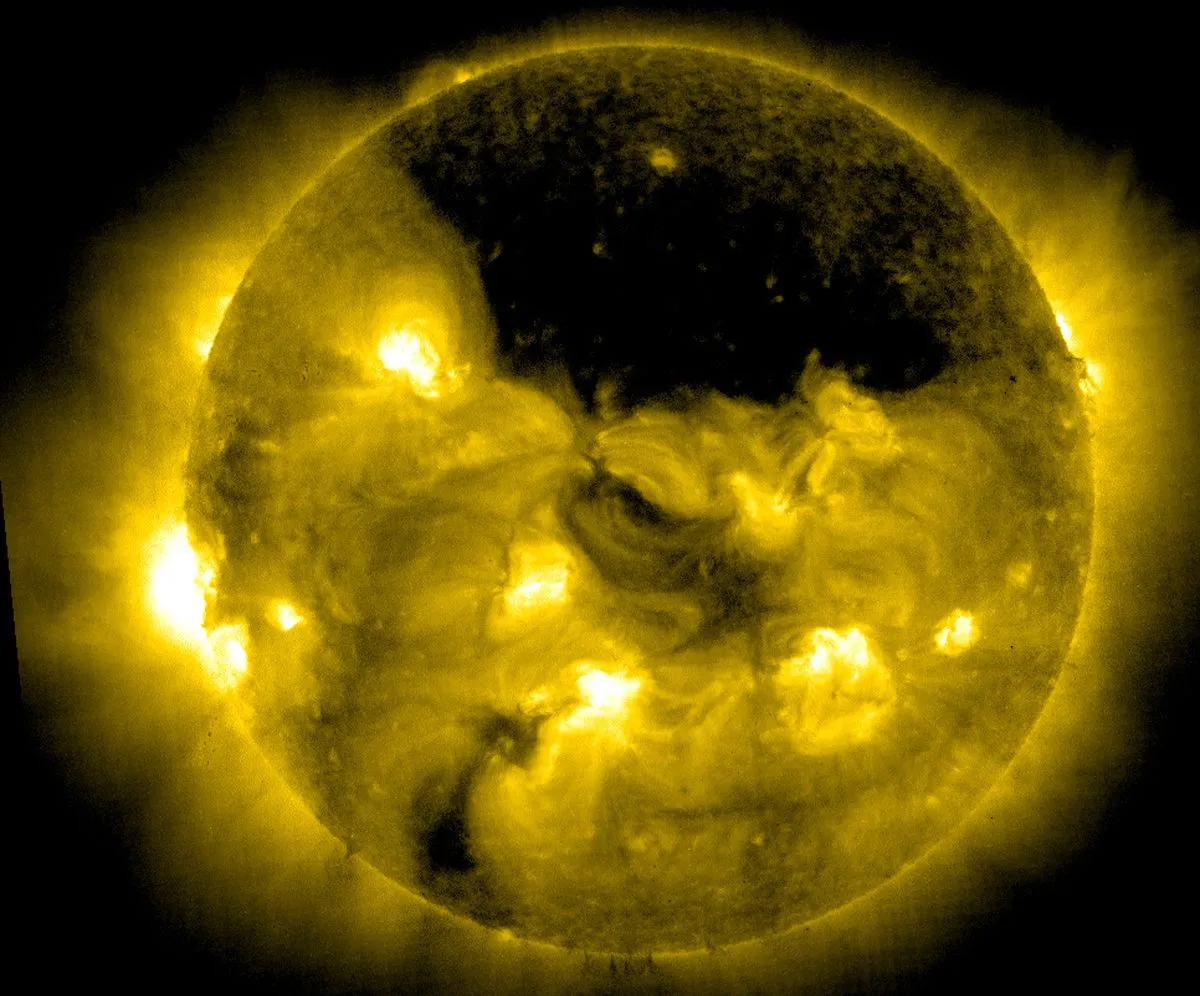In theory, a Dyson sphere is a hypothetical, spherical megastructure built around a star to harvest its energy.
In very rough terms, think of it as an absolutely enormous, curved solar panel.
More thought experiments

The problem with stars is that while they provide heat and light energy to the planets that orbit them – something we should obviously be grateful for, as the Sun’s energy enabled life to emerge on Earth – the vast majority of their energy simply dissipates outward into space.

But what if that energy could be harvested?
That’s a concept that has long fascinated science fiction writers, and one of the first to propose a structure that might be used to do so was British philosopher and author Olaf Stapledon, in his 1937 novel Star Maker.
Other sci-fi writers later embraced the idea – it even forms the basis of a 1992 storyline in Star Trek: The Next Generation – but Dyson spheres are actually named after the British-American physicist Freeman Dyson.

Inventing the Dyson sphere
Pondering how we might go about detecting distant alien civilisations, Dyson hit upon the idea of energy-harvesting spheres of the kind described by Stapledon.
Such structures would likely become super-heated by all the energy they absorb.
As a result, per the second law of thermodynamics, they would emit large amounts of infrared energy – and hence be detectable from Earth.
Dyson described such a system in a paper published in the journal Science in 1960, though with one key difference.
Rather than being a sphere with a single, all-encompassing outer surface, it would need to be a spherical cluster of smaller, discrete objects – a ‘Dyson swarm’, if you will.

Note that Dyson never proposed building such a structure. The point was to answer the question 'What might alien civilisations look like, and what telltale signatures – technosignatures, to be precise – could we look for that might reveal their presence?’.
His paper did, however, include some rough calculations that revealed some of the difficulties involved in building a structure of this kind – not least the vast amounts of energy and raw materials required, which Dyson suggested would involve 'dismantling' a planet the size of Jupiter!
So don’t expect NASA to announce it’s building a Dyson sphere around the Sun any time soon.

Searching for alien Dyson spheres
The problems surrounding building a Dyson sphere haven't stopped astronomers searching for the kind of high-intensity infrared signals that might come from such an object elsewhere in the Galaxy.
In fact, quite a few Dyson sphere candidates have been suggested over the years.
In 2009, Fermi National Accelerator Laboratory astronomer Richard Carrigan identified 16 potential Dyson sphere-like sources in data from the Infrared Astronomical Satellite (IRAS).

More recently, a programme called Project Hephaistos used machine learning to identify a further seven potentially Dyson-like sources in existing astronomical databases.
All that means, though, is that the objects in question emit significant energy in the infrared.
That COULD mean they are Dyson spheres, but it could also mean they simply lie between Earth and a more distant galactic infrared source.
Similarly, while fluctuations in their infrared emissions COULD be caused by a Dyson swarm, they could also be caused by the infrared light passing through dust clouds on its way to Earth.

In short
We’re still an infeasibly long way off building a Dyson sphere here in the Solar System.
We’ve yet to detect their presence anywhere else in our Galaxy. But we can’t rule their existence out entirely.
Once you get beyond the Milky Way, the picture changes.
We don’t have the technology yet to detect infrared signals from individual objects within distant galaxies, so the Universe could be teeming with them, for all we know!
Or there could be none at all. We really have no idea what other galaxies look like from the inside.
So who knows what exotic materials or energy sources any putative civilisations contained therein might have access to?
Do you think a Dyson sphere would be possible, or even desirable? Let us know by emailing contactus@skyatnightmagazine.com

